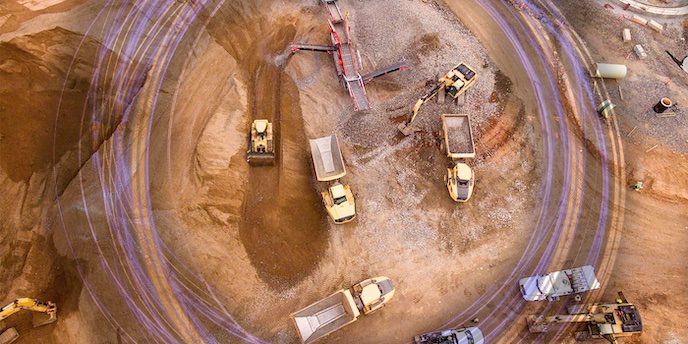

It has been a difficult couple of years, with the pandemic and continuing supply chain issues. However, there are green shoots appearing, the energy crisis is not as severe as first thought, and China is reopening. Nevertheless, there is across the industry a high level of uncertainty and doubt that still pervades.
Looking further back, to the 2008 global financial crisis, there were companies that stood out during those equally uncertain times. Businesses that through innovation, accelerated away from the pack, chiefly because they used technology to leapfrog competitors or create new market opportunities as the economy picked up.
A key trend for any successful business is to evolve the organization to act and look more like a software company. Of the top performing companies, 70% utilize data as a core element to introduce new customer platforms. We see this almost every day whether it is OEM OHV, through to small tools and accessories. Across industries, 33% of those top performing companies monetize software directly, demonstrating it is becoming a true software play.
Construction is witnessing three major market shifts. Firstly, embedded software that drives the machine processes are now rooted in the system. Secondly, connected products and devices that are generating data and creating value from new services can now be implemented to provide insights to improve safety, productivity and financial return. This has created a much tighter integration between software and services available to the company and its customers.

Finally, the growth of cloud computing has lowered the barrier to access through software as a service capability, and yet there is still a low success/implementation rate even with this greater accessibility.
It is predicted that the average company’s share of revenue from software will double over the next three years. Given that only 7% of global software revenue comes from companies that are non-tech, this is a situation that needs to change.
There is real value to be generated by OEMs, rental and contractors through collaborative partnerships with software companies.
Since the first wheel, we have been aware that all hardware will eventually fail or break. It is only recently that we now understand that software is a continuous cycle of development and improvement.
Most first releases of software only deliver 20% of their potential. It is the process of iteration that produces a product with a more complete market fit. Even so, over the past 20 years across all industries, only 29% of software products launched were successful.
‘Since the first wheel, we have been aware that all hardware will eventually fail or break. It is only recently that we now understand that software is a continuous cycle of development and improvement.’
This increasing reliance on software and the need to improve the success rate, highlights the necessity that the software play is a fundamental change to an organization. There needs to be the right environment for software professionals to lay the foundation for growth. Leadership is essential — there must be total C-Suite buy in to the software transformation of the business.
Increasingly companies are strengthening their leadership team with technology-skilled senior management. Moreover, most organizations need to flatten the organizational structure and provide an autonomous development environment that empowers experimentation.
The difficulty for most organizations is that software development is not easily reported on a spreadsheet. Then there is the difficulty of attracting skilled developers into construction, with 64% of companies reporting shortages in tech talent.
‘From our own research, we see that customers create 66% more value over a three-year period if they engage in the ecosystem.’
Cross organizational collaboration is gaining importance in technology development within construction. Many organizations have found that going it alone, costs them in resources, time and effectiveness in their outcomes. It is not just our belief that to gain efficiency customers should take advantage of systems and services already in the ecosystem, this is simply good business sense.
From our own research, we see that customers create 66% more value over a three-year period if they engage in the ecosystem. Leading software companies collaborate with partners that can accelerate and complement their network of offerings and services. These companies use data to drive profound material business impact.
When organizations get the internal process right, invest in collaboration with partners where all parties gain benefit and business impact, then they advance within the digital acceleration gap. This is a demonstrable theory that those companies which invest in new processes, service and augmented products continually increase the gap between themselves and those that do not invest.
Success is not cheap, but failure is expensive. A McKinsey report from 2022, states that to generate a return over a 3-5 year period, a software enabled business needs to invest 25% of revenue. I’m not suggesting every new development requires that kind of investment, but once you define the software scope and create the business plan, you need to be aware of the high level of investment needed to see the development through. Keep in mind that up to 30% of the investment will be required to maintain the product or service through its lifecycle.
‘Success is not cheap, but failure is expensive.’
This switch to software-led organizations has encouraged businesses to differentiate their go-to-market strategies and decouple their software services sales from their hardware sales. Furthermore, this has expanded the sales teams remits to look beyond the core market. Obviously, with these numerous changes in the construction market, senior management and investors must be comfortable with the change in risk characteristics.
This transformation requires a commitment to long-term investment into these new processes and services, to reap the potential rewards from software profitability.
Our evolving industry is an exciting challenge, where the rewards are worthwhile, as revenue from software is around 10x enterprise value set against hardware. This genie is not returning to the bottle, and as the data demonstrates, the organizations that fully commit, invest first and collaborate will accelerate away from their competitors, while providing the most productive products and services to their customers.
For more insightful presentations watch Trackunit Next on-demand.
Never miss an insight. We’ll email you when new articles are published on this topic.
